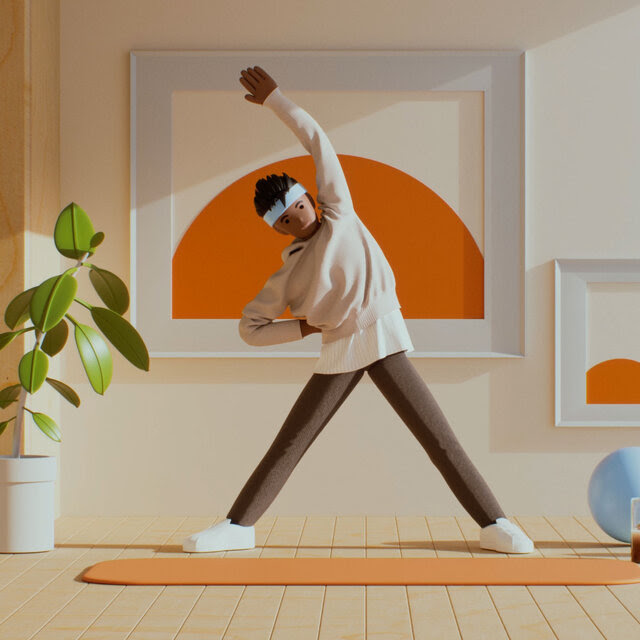Well: How to eat for better energy
| 11:01 (há 53 minutos) |    | ||
| ||||
SUBSCRIBER-ONLY NEWSLETTER PREVIEW This is a preview of the Well newsletter, normally reserved for Times subscribers.This week we are offering you a preview of the first installment of our 7-Day Energy Challenge. Become a subscriber today to receive the Well newsletter directly to your inbox. Your subscription will also give you access to our weekly Well newsletter, which features guidance to live your healthiest life; an exclusive selection of newsletters reserved for subscribers only; and unlimited access to everything we offer.
How to eat for better energy
This is Day 3 of the 6-Day Energy Challenge. To start at the beginning, click here. When I wake up in the morning, my first thought is usually about what I want to eat — and as soon as I’m done with a meal, I’m already planning the next one. This tendency to look ahead is pretty common, said Dr. Nate Wood, a culinary medicine researcher at the Yale School of Medicine and a trained chef. But, he added, “rarely do we look back and reflect on how the foods that we eat make us feel, unless maybe our stomach is upset.” Tuning into how our food affects us, he said, can help us understand which foods give us energy and which make us sluggish. It can also help us eat for better energy going forward. That’s the focus of today’s challenge. Energy Challenge Day 3: Track your energy after you eat.The task is simple: Notice how the foods you eat make you feel. An hour and a half to two hours after you have a meal or snack, jot down any sensations you’re experiencing: Are you satisfied, tired, peckish? Then rate your energy level from one to five. Why should you wait for an hour or two after eating? That’s when digestion is well underway, Dr. Wood said. As your meal breaks down, glucose enters your blood stream and the pancreas secretes insulin, which your cells use to absorb the glucose for energy. As your brain and gut send signals to each other about how the food is being processed, you’ll be able to get some idea of whether the food has energized you or is making you feel depleted. Every meal doesn’t need to be viewed solely as fuel for the tank — food should also be pleasurable, of course. But paying attention to what you eat can help you feel better in the long run. Some questions to ask yourself: Was this meal mostly carbs? Was there a lot of sugar? Did I eat any protein? One day of tracking should give you some insight into how different foods affect your energy. To get an even more accurate gauge, Dr. Wood suggested trying this exercise for the next three days. Then, if you want, you can use those clues to focus on foods (and combinations of foods) that give you energy. Feeling inspired to make a few changes? Here are some ideas.If you want to get more energy from your meals, there are small adjustments you can make. Filling your plate with foods rich in fiber, complex carbs and protein can slow the absorption of sugar into the bloodstream and help prevent fatigue, Dr. Wood said. If you can weave that trifecta into your meals and snacks as much as possible, you may feel more energized. I told Dr. Wood that I typically have a low-protein breakfast, like a fruit smoothie or a slice of whole grain toast. Two hours later, I’m usually drooping. He suggested adding avocado along with shredded chicken and sriracha to my toast, or protein powder or a spoonful of nut butter to my smoothie, so that my energy lasts much longer. Dr. Wood also said that “lunch and dinner foods can often be healthier than breakfast foods, and can be easier to incorporate vegetables.” This made me feel great, since one of my colleagues had recently inspired me to start eating leftovers for breakfast. She’ll have things like quinoa with stewed chickpeas and tomatoes. Now I’m aiming to do dinner for breakfast more often. For midday snacks, Dr. Wood said to keep sources of lean protein handy to pair with complex carbs, such as whole-grain crackers with hummus or cottage cheese. Lunches and dinners should follow the same formula, Dr. Wood said. Lunch might be a curried tuna salad sandwich with arugula on whole-grain bread, along with a handful of berries, he suggested. Dinner might be a three-bean chili with Greek yogurt and scallions, with a baked sweet potato sprinkled with cinnamon on the side. This exercise isn’t about deprivation, but about finding a formula for a steadier energy supply, Dr. Wood said. And for the majority of people, he added, making small changes “leads to change that is more sustainable.” How did your meals and snacks make you feel today? Share your discoveries in the comments here. Craving a delicious, sustaining snack? Try this energy bar recipe from New York Times Cooking.
This easy, customizable energy bar recipe was created by Genevieve Ko, an editor at New York Times Cooking. It’s packed with fiber, thanks to whole wheat flour and tangy dried fruit, and nuts add protein — and crunch. Save the recipe: Energy Bars END OF PREVIEW Enjoying this newsletter? Subscribe now to keep receiving it.Subscribe to The New York Times to get the weekly Well newsletter, sent directly to your inbox. You’ll also receive full access to our entire suite of subscriber-only newsletters and unlimited digital access to everything that The Times has to offer. Subscribe now.
| |||||||||||||||||||||||||||||||||
ResponderEncaminhar |







No comments:
Post a Comment